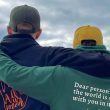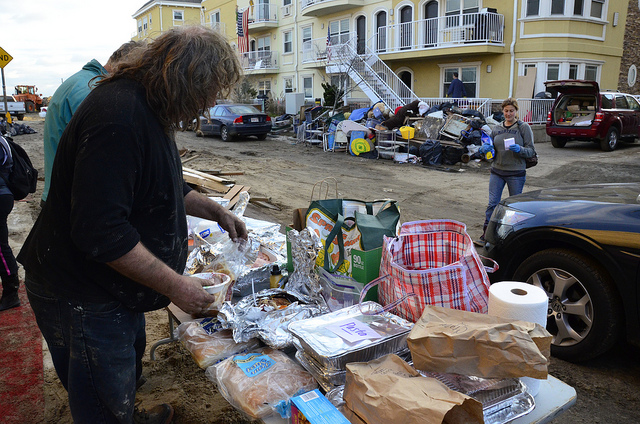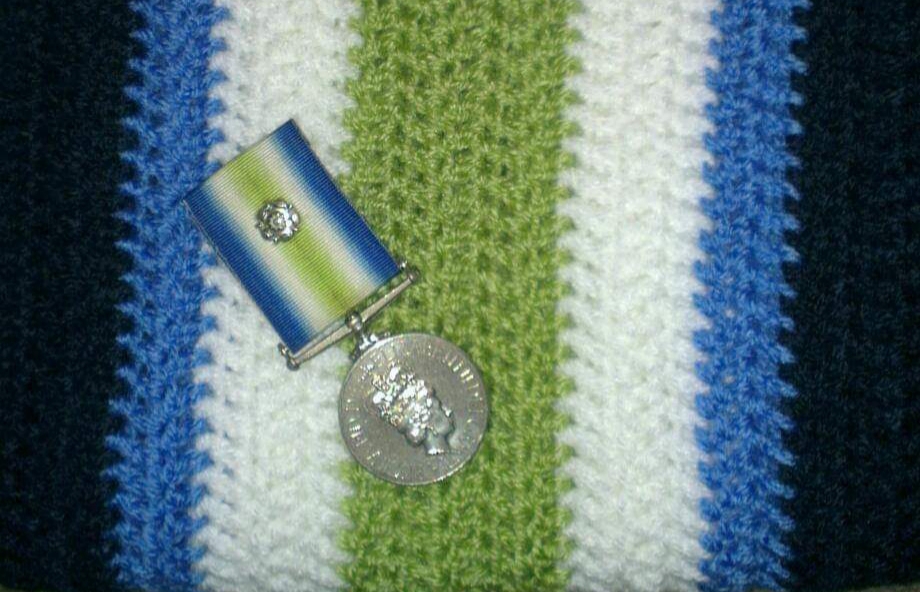While the American Red Cross have come under fire for their slow and inneficient response to hurricane Sandy, another group were on the scene as it was happening, and have been a driving force behind the relief effort in New York and New Jersey. The group responsible is Occupy Sandy, a mobilisation of the Occupy Wall Street movement to coordinate voluteers, distribute food, clothing, and power to those in need of help.
“We leaped into action right away because we were in a position to because of our networks, because of our attitude and our culture of mutual aid.” said Rebecca Manski a representative of Occupy Sandy and activist involved in Occupy Wall Street from the outset. “We were able to get a ton of work done that other institutions who were supposed to do that work were unable to do.”
Mrs Manski, speaking outside one of the many Occupy Sandy hubs surrounded by the sounds of dogs barking and sirens wailing, says that the move from activist movement to relief effort was not a big one: “One or two people sprung into action here and there and people started coming out of the woodwork to try to help, they were able to work with each other very quickly because they knew each other.”
She added that other larger institutions such as the Red Cross, FEMA, and New York Cares failed to deliver the fast response needed due to vast bureaucracy and limitations associated with liability. On the other hand, Occupy Sandy is a decentralised yet highly organised response unit – “roughly 22,000 meals to those in need” were provided by the second day.
They did not only provide food clothes and blankets. At the Red Hook area hub where Mrs Manski is based there are 15 doctors who are visiting those in need of care in their homes if necessary, they instantly sent out volunteers into the projects, and more hard to reach areas where the government and other efforts won’t go, said Mrs Manski.
The networks and organisational procedures already created during the Occupy Wall Street protest were put to good use during the relief effort. Mrs Manski said that they had learned how to best distribute food and blankets from their experience of Occupy Wall Street, which meant that the organisational base was already there. She said 60% of the Occupy Sandy volunteership was past and present protesters and the rest were ad hoc volunteers.
Occupy Sandy have set up hubs across New York and now in New Jersey as the go to places to donate food, clothing, blankets or to volunteer to help the relief effort . “The driving force behind the effort is definately from Occupy Wall Street”, said Mrs Manski. “It is incredibly scary and very depressing being in these neighbourhoods without any power. It was absolutely as apocalyptic as you can imagine and people were really suffering.” The fact that Occupy Sandy is a human faced organisation is arguably their main asset, because it allows for a very open attitude. Where other organisations are suspicious of people hoarding, we do not question their motives – “if someone asks for help we give it”, she says.
The Occupy movement has quickly mobilised in order to ensure mutual cooperation, food and warmth for all, and yet this has not been widely publicised. While this may be a politically sensitive issue, informing those in need that mutual participation is the most efficient way to help those in need can only be a force for good.







